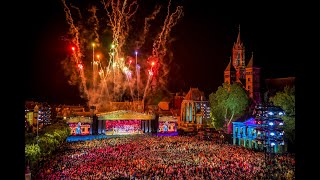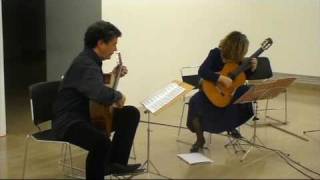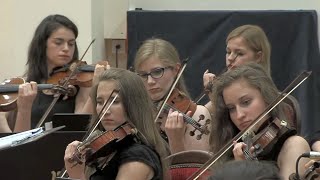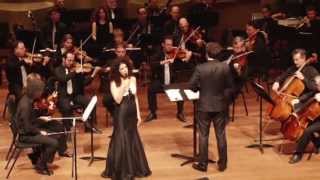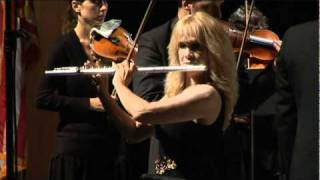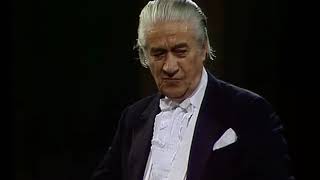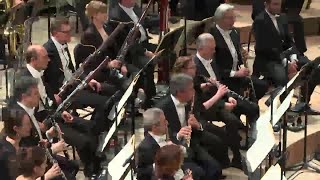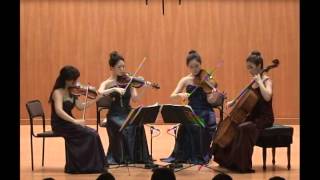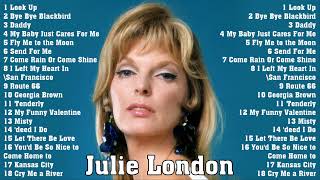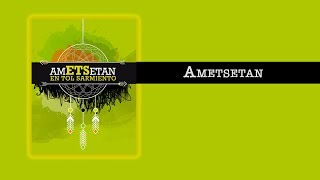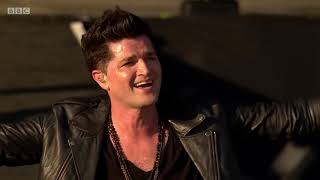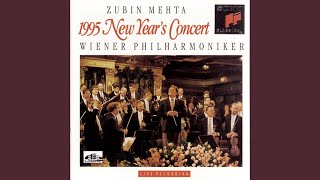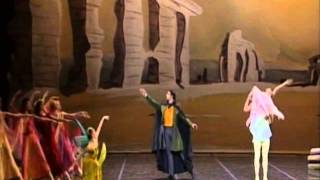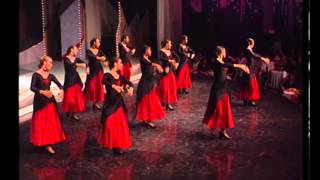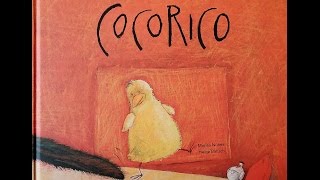Recommended music videos for initiation to classical music
André Rieu (1949) is a Dutch violinist, composer and conductor, who has belonged to different orchestras until he founded the Johann Strauss Orkest in 1987 with which he has traveled a resounding journey brimming with popularity; an orchestra that started with 12 musicians and currently has between 80 and 150 members depending on the program it offers. With her he has traveled all over Europe, North and South America, Japan and Australia . The music that he usually offers is a hodgepodge of classical, popular, folk music and soundtracks both in live performances and in recordings made in his own studio in Maastricht , with which he has won several gold and platinum records in various countries.
Traditional music of Cuba is the expression of autochthonous rhythms and melodies or introduced on the island of Cuba , which can have various origins or stages dating from the fifteenth century to the end of the twentieth century with the settlement of its original or native peoples, the influence of its Spanish colonizers and the arrival of African slaves to the island in the 16th century . This strange and rich combination has given rise to various musical genres.
According to the Cuban composer and musicographer Armando Rodríguez Ruidíaz : "The components of autochthonous Cuban popular music are related from their origin to each other, in one way or another, during the course of their development, which is presented as the evolution of a prototype original formal and stylistic form, the common ancestor of all subsequent generic forms... ... Spanish dance songs with a sesquiáltero rhythm were the original seed from which the evolutionary process started that gave rise to numerous autochthonous Ibero-American styles.The structure of those songs, which included Its copla and chorus form, as well as its sesquialtero rhythm of African origin, was replicated and modified in the towns of America, giving rise to various regional genres."
Three main lines of evolution arose from the elaboration of the first Spanish songs and dances that arrived in Cuba in the 16th century : 1 – DANCE SONGS such as the punto guajiro and the zapateo, the Cuban guaracha, the rural rumba, the urban rumba, the carnival conga, the son, the danzonete, the hall rumba, the hall conga, the danceable bolero, the son montuno, the mambo, the chachachá, the songo and the timba. 2 – DANCES like the Cuban contradanza, the dance, the danzón and the danzón-mambo . 3 – SONGS, composed of the habanera, the Cuban bolero, the guajira, the clave, the criolla, the congo tango, the proclamation and other hybrid genres such as the guaracha-son, the guajira-son, the bolero-son, the lament -they are, the criolla-bolero , the bolero-danzón, the song-habanera and the song-bolero .
Aram Khachaturian (1903-1978) was an Armenian composer under the Soviet regime. At the age of 22 he began to write his first works for piano and chamber music; later orchestral music, theater and film music (more than 40 works between both genres), as well as ballet music in which the Espartaco ballet and the Gayane ballet are noteworthy, to which the well-known saber dance belongs. He had major disagreements with the Party , being denounced for his " anti-people music ", although after Stalin 's death in 1953, he was widely recognized. His music is clear, agile and vibrant, and in his works Armenian popular music is felt, to which he has always felt attracted; in Armenia he is considered as its main composer.
Masquerade was written in 1941 by Aram Khachaturian as incidental music for a production of the play of the same name by the Russian poet and playwright Mikhail Lermontov . Later, in 1944, Khachaturian extracted five movements (I Waltz .-. II Nocturne .-. III Mazurka .-. IV Romance .-. V Galop) to make a symphonic suite of which today we offer the first, Waltz, in version of the Symphony Orchestra of the Stanisław Moniuszko Music School of Wałbrzych, Poland, conducted by Małgorzata Sapiecha-Muzioł .
Kurt Weill (Dessau, March 2, 1900 - New York, April 3, 1950) was a German composer, who studied musical composition at the Berlin Conservatory with Ferruccio Busoni and, although he had some success with his early works, Weill tended to more and more towards instrumental music and musical theater. In 1926, he made his theatrical premiere in Dresden with his first opera, Der Protagonist . He had the ultimate success with Die Dreigroschenoper (The Threepenny Opera), written in collaboration with the playwright Bertolt Brecht . His music was not to the taste of the Nazis, who boycotted him continually; So in 1935 Weill traveled to the United States composing important musicals until he suffered a heart attack on April 3, 1950.
September Song is a popular song composed by Kurt Weill with lyrics by Maxwell Anderson . It was featured by Walter Houston in the 1938 Broadway musical production of Knickerbocker Holiday. The song, which has been recorded by numerous singers and instrumentalists, is offered to us today by the Israeli soprano Keren Hadar accompanied by The Israel Camerata Jerusalem conducted by maestro Yaniv Dinur.
Recommended classical music videos
Telemann Georg Philipp (1681-1767) was a German Baroque composer, a contemporary of Bach and Handel and considered the most prolific in history. A self-taught musician, at the age of twelve he began to compose against the will of his mother, who did not see a peaceful future in a musical career; However, Telemann , with a kind character and an enormous capacity for work and perseverance, continued in his endeavor: studying and composing. He learned to play, single-handedly, countless instruments, while on his frequent travels he became familiar with different styles of composition. After spending a few years in various positions in Leipzig , Żary (Sorau in German) and Eisenach , in 1721 he was appointed music director of the five largest churches in Hamburg , where he would spend the last 47 years of his life. He wrote abundant chamber music, symphonic and concert music, motets, psalms, cantatas, oratorios, and more than 40 operas.
Suite (French voice) is a musical form composed of several short instrumental movements of a dance nature. Its origin is found in the contrasting pairs of dances of the Renaissance (1300-1600). During the Baroque (1600-1750) it was one of the most important musical forms and is considered one of the first modern-type orchestral manifestations. At the end of the Baroque , the suite was already a sophisticated musical form that mixed several dances in different keys, contrasting different thematic materials and restating them in its finale; structure that announces, in short, the origin of the sonata . At present, the suite is understood more as a symphonic composition freely articulated by several episodes of a similar nature.
Today we will watch one of Telemann 's concert suites: the Suite in A minor for flute and string orchestra with Marilyn Maingart as solo flute, accompanied by the Mont Blanc Chamber Orchestra conducted by maestro James Brooks Bruzzese
Anthony Bruckner (1824-1896) was an Austrian organist and composer obsessed with perfection to the point that his works were continually revised and reformed, so that today there are numerous versions of his works. After his father's death, he entered the nearby St. Florian Monastery as a chorister, where he received music lessons. In 1855 he was appointed organist of the Ignatiuskirche Cathedral , without this being an obstacle for him to continue his composition studies in different ways. In 1864 he began to publish his first compositions that would henceforth focus mainly on religious works and symphonic works.
Symphony No. 4 in E flat major (WAB 104) is one of Anton Bruckner 's most popular compositions. It was written in 1874 and revised successive times until 1888. It is dedicated to Prince Konstantin of Hohenlohe-Schillingsfürst . Its premiere took place in Vienna , directed by Hans Richter , and with great success. The Romantic subtitle was used by the composer himself, and refers to the concept of medieval romance , as reflected in Wagner 's Lohengrin or Siegfried . The Symphony is structured in four movements: I () BEWEGT, NICHT ZU SCHNEL .-. II (22´37´´) ANDANTE, QUASI ALLEGRETTO .-. III (40´40´´) SCHERZO: BEWEGT - TRIO: NICHT ZU SCHNELL. KEINES FALLS SCHLEPPEND .-. IV (51´39´´) FINALE: BEWEGT, DOCH NIGHT ZU SCHNELL.
Sergiu Celibidace (1912-1996) was a Romanian conductor close to the doctrines of Zen Buddhism who, in addition to his musical studies, studied philosophy and mathematics. He was principal conductor of the Berlin Philharmonic , he worked with orchestras from Stockholm, Stuttgart and Paris until in 1979 he was appointed head of the Munich Philharmonic with which he was linked until his death; In recognition of his work, he received important awards from the Federal Republic of Germany , despite the fact that he was averse to the recordings, claiming that they do not reflect all the nuances. Celibidace is for many critics the best conductor in history, specializing in Bruckner, for whom he felt a special attraction.
Claude Debussy (1862-1918) was a French composer considered to be the first composer of Impressionism . In 1884, with the cantata L'enfant prodigue, he won France 's most prestigious musical award, the Prix de Rome . Back in Paris , he was impressed by Wagner 's opera Tristan and Isolde , “the best I have ever heard”. Later he would be influenced by the structures of Javanese music, by the harmonic freedom of Rimski-Korsakov and by Erik Satie , similar to his approaches. In 1894 he premiered his Prélude à l'après-midi d'un faune ; four years later is when he achieved his international fame with his only finished opera Pelléas et Mélisande ; he was then 37 years old. Today Debussy is considered one of the most important composers of the 20th century .
Musical Impressionism is a musical trend that arose in France at the end of the 19th century . When post-romanticism arrived, authors such as Gabriel Fauré or Camille Saint-Saëns experimented with Greek modes and timbre , but without going too deep. And so, at the end of the 19th century , Impressionism arose ( whose name was already used in painting from the years 1860-70 from the idea of expressing ideas in an insinuated way). In music, the use of the pentatonic scale and the Greek modes, harmonic and rhythmic freedom, and experimentation with timbre were the main characteristics of this movement, in which Claude Debussy is the most notorious impressionist author, along with Maurice Ravel . and Erik Satie .
Images pour orchestra (Images for orchestra) is a composition for orchestra in three sections by Claude Debussy , written between the years 1905 and 1912. Originally intended as a work for two pianos from the first series of Images for solo piano , in 1906 he began to think about organizing the work as an orchestral triptych: I (0´18´´) GIGAS (Moderate) .-. II (8´14´´) IBERIA: 1 Through the streets and paths ( Quite lively ). 2 (15'25'') Aromas of the Night ( Slow and Dreamy ). 3 (23'30'') The morning of a holiday ( To the rhythm of a distant, alert and happy march ).-. III (28'48'') ROUND OF SPRING DANCES. Today it is offered to us by the Orchester national de France conducted by the French maestro Emmanuel Krivine .
Béla Bartók (1881-1945) was a Hungarian pianist and composer who extensively researched the folklore of his country; He was also one of the founders of ethnomusicology . In Pozsony he met Ernő Dohnányi with whom he moved to Budapest where he studied composition as well as continuing his piano studies; there he meets Zoltán Kodály with whom he will carry out an in-depth study of Hungarian folklore (he came to collect thousands of songs from the mouths of peasants), which he will apply to his own compositions. He wrote music for piano, chamber music, two cantatas, a concerto for orchestra, two rhapsodies for violin and orchestra, two concertos for violin and one for viola, three concertos for piano, an opera, and two ballets.
Béla Bartók 's String Quartet No. 4 in C Major was composed between July and September 1928 in Budapest . It is one of the six Bartok string quartets. The work is dedicated to the Pro Arte Quartet but its first public performance was given by the Waldbauer-Kerpely Quartet in Budapest on March 20, 1929. The work consists of five movements: I (0´9´´) HAPPY .-. II (6´11´´) PRESTISM, WITH SORDINO .-. III (9´22´´) NON TROPPO LENTO .-. IV ALLEGRETTO PIZZICATO (14´48´´) .-. V (18´31´´) ALLEGRO MOLTO and, like other pieces by Bartók , exhibits an arc shape : the first movement is thematically related to the last, the second to the fourth, while the third appears alone. Furthermore, the four outer movements feature rhythmic sforzandos that cyclically link them in terms of climatic areas .
Today it is offered to us by the female quartet Yul String Quartet.
Recommended music videos for all tastes
Julie London (née Peck; September 26, 1926 – October 18, 2000) was an American singer and actress whose career spanned more than 40 years, noted for her sultry, languid contralto voice; she recorded over thirty albums of pop and jazz standards between 1955 and 1969. Her recording of " Cry Me a River ", a song she introduced on her debut album, was inducted into the Grammy Hall of Fame in 2001. song was composed by Arthur Hamilton and produced by her husband, Bobby Troup . In addition, she was nominated for a Golden Globe in 1974 for her portrayal of nurse Dixie McCall in the television series Emergency! .
En Tol Sarmiento , also known as ETS , is a Basque ska group formed in 2005 in Lekora/Yécora (Araba/Álava). Throughout their career, they have performed more than 300 concerts throughout the Basque Country . They are characterized by cheerful and powerful rhythms and lyrics, both in Basque and Spanish, that address different themes. Although the group began alternating hedonistic lyrics with social criticism, their lyrics have evolved towards an existentialist theme, although without losing their social commitment (they deal with controversial issues such as hydraulic fracturing, the right to self-determination, gender violence or bullying ) and the happy rhythms that have always characterized the Alava quintet.
Hikaru Utada (January 19, 1983) is a Japanese/American pop singer, songwriter, and producer. Born in the United States to Japanese parents, Utada began writing music and lyrics at an early age traveling often to Tokyo as a result of her father's work. In the late 2000s, Utada was considered by The Japan Times to be "the/the most influential artist of the decade" on the Japanese music landscape and one of the best-selling recording artists of all time in Japan , with over 50 hits. Millions of records sold. In 2021, Utada announced her non-binary gender identity, becoming one of the first public figures in Japan to identify herself in this way.
The Script is an alternative rock band from Dublin , Ireland, consisting of Danny O'Donoghue (vocals, guitar, keyboard), Mark Sheehan (guitar, vocals) and Glen Power (drums, backing vocals). They are currently based in London after signing with the Sony Group Phonogenic label. The band released their self-titled first album in August 2008. Their music has been featured in video games such as FIFA 09 and on television shows such as 90210 and Waterloo Road . The Queen of Great Britain invited the band personally to play for her when she was invited on BBC Radio 1 . The band signed to Phonogenic in 2005 , and released an EP on Last.FM ; Until 2015, they have 4 albums: "The Script", "Science & Faith", "#3" and "No Sound Without Silence".
Recommended peculiar videos
Josef Strauß (1827-1870) was an Austrian composer and conductor, the son of Johann Strauß I and the brother of Johann Strauß II and Eduard Strauß . Unlike his family, Josef did not aspire to a musical career. Instead, he studied at the Vienna Polytechnic and worked as a rigger on the construction of a dam in Trumau (Lower Austria). Starting in the autumn of 1852, he was forced to fill in for Johann 's absence as Kapellmeister more and more frequently. He received composition classes and learned to play the violin. While on tour in Warsaw , Josef collapsed unconscious and soon died in Vienna . Josef Strauß composed waltzes, polkas, contradanzas and other dance pieces, as well as an operetta.
The Viennese waltz (in German, Wiener Walzer ) is one of the dance styles within ballroom dancing ; It is a rotating dance where the dancers are constantly turning to the leader's right (natural) or to the left (reverse), interspersed with non-rotating change steps to change the direction of rotation. A true Viennese waltz consists only of turns and change steps. Furthermore, in a properly danced Viennese waltz , the couples do not pass, but instead continually turn from left to right as they travel counterclockwise around the floor, following one another.
Today we offer the waltz by Joseph Strauss , performed on New Year's Day, Mein Lebenslauf ist Lieb und Lust (“My character is love and joy”) in a version by the Vienna Philharmonic conducted by the master Zubin Mehta and choreographed by the Vienna State Ballet Company.
Hector Berlioz (1803-1869) was a French composer, an eminent figure in program music and romanticism in general. He studied in Paris and in Rome , where he received a scholarship, paying attention to the hymns of his teacher, Jean-François Lesueur , and imitating Beethoven , then unknown in France ; also Gluck, Mozart, Étienne Méhul and Carl Maria von Weber. In 1844 he composed the first known work for saxophone, the Canto Sagrado sextet, which was premiered under the baton of Berlioz himself and with Adolphe Sax on saxophone. He also wrote several symphonies (including his best-known work, the Fantastic Symphony ), operas, operas, cantatas, sacred music, non-theatrical dramatic works, choral works, and numerous songs.
The Fantastic Symphony , op.14, subtitled Episode from the Life of an Artist , consists of five movements:
I (0´48´´) DREAMS AND PASSIONS describes the anxiety produced by the protagonist before meeting his beloved, later the volcanic love that she inspires in him. Towards the end of this movement, we perceive a contrast between the passion produced by the protagonist and the grief caused by the rejection.
II (15'28'') A DANCE, there is a reunion with the beloved after the rejection, in a dance. The music then adopts the tempo of a waltz, thus describing the restlessness of the protagonist. The "fixed idea" appears briefly interrupting the waltz, reappearing at the end of the movement.
III (22´02´´) SCENE IN THE FIELD . It describes two shepherds, represented by the duo formed by the English horn and the oboe, enjoying a wonderful summer afternoon. Towards the middle of the movement, the beloved appears and he is invaded by terrible premonitions. At the end the English horn reappears, again evoking the pastoral theme and ending with a timpani roll, which produces a mysterious climate.
IV (39´00´) THE MARCH TO THE GADALSO. The musician dreams that he kills his beloved and, therefore, is sentenced to the guillotine to be executed; at that moment he remembers for the last time the feeling of love. The march is based on two main themes each interpreted by the strings and the winds. The movement ends with drum rolls and timpani along with chords played by the brass winds symbolizing the power of justice.
V (43´47´´) DREAMS OF A COVEN NIGHT. The protagonist witnesses his own funeral, surrounded by witches and spirits among which he can see the beloved transformed into a harpy. The Dies Irae ( 12th century melody belonging to the Gregorian chant, and which is part of the Requiem ) is introduced in the work together with the round of the witches accompanied by the ringing of the bells. (Extracted from Digital music lover). (15-1-23)
The version that we offer today, choreographed by Léonnide Massine , is performed by the Orchestra and Ballet of the National Opera of Paris with Emmanuel Villaume at the lectern and Kader Belarbi and Fanny Gaïda as leading figures
Gerónimo Giménez (Seville, 1854 – Madrid, 1923) was a Spanish composer and conductor, who dedicated himself mainly to the composition of zarzuelas, leaving outstanding titles such as La tempranica or La boda de Luis Alonso . He began with his father in musical studies and later continued in Cádiz , with Salvador Viniegra . He was a child prodigy, who at the age of 12 entered the Teatro Principal de Cádiz as first violin. At the age of 17 he was already the director of an opera and zarzuela company and received a scholarship to study violin and composition in Paris . In 1885 he was appointed director of the Teatro Apolo in Madrid ; soon after, director of the Teatro de la Zarzuela and later, director of the Sociedad de Conciertos , a position he held for 12 years. He died in Madrid on February 19, 1923.
Today the José Racero Ballet offers us a careful choreography of the Prelude to the zarzuela in one act La Torre del oro by maestro Gerónimo Giménez .
The Tuba or bass is the largest of the brass instruments. It is one of the more recently added instruments to the modern symphony orchestra, appearing in 1835 with Wilhelm Friedrich Wieprecht and Johann Gottfried Moritz , replacing the 18th-century opichleid . The sound, as in all brass instruments, is produced thanks to the vibration of the performer's lips in the part called the mouthpiece from the air column (air flow). The first time the modern tuba was used in a symphony orchestra was in Richard Wagner 's The Ring of the Nibelungs . It is used to reinforce strings and woodwinds or, increasingly, as a solo instrument; also, in music bands and wind ensembles.
Recommended music videos for children
Various Wikipedia articles have been used to write these texts.
The texts of Videomusicalis are written in Basque, Spanish and English.





